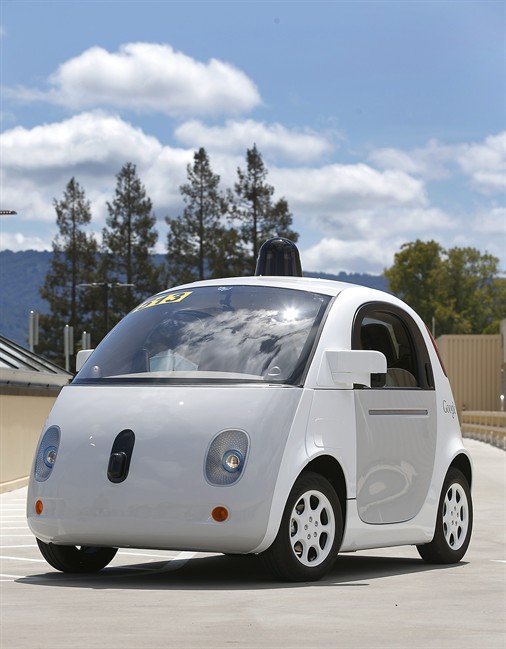SAN FRANCISCO – The latest models of Google’s self-driving cars are now cruising the streets near the Internet company’s Silicon Valley headquarters as an ambitious project to transform the way people get around shifts into its next phase.

This marks the first time that the pod-like, two-seat vehicles have been allowed on public roads since Google unveiled the next generation of its self-driving fleet more than a year ago. The cars had previously been confined to a private track on a former Air Force base located about 120 miles southeast of San Francisco.
Google announced last month that it would begin testing the curious-looking cars last month, but hadn’t specified the timing until Tuesday when it disclosed the vehicles are driving up to 25 miles per hour on the roads around its Mountain View, California, office.
READ MORE: Google’s driverless car looks cool, but could it handle a Canadian winter?
Google had installed its robotic driving technology in Lexus sports utility vehicles and Toyota Priuses during the first few years of testing before developing the smaller prototype. The new models are designed to work without a steering wheel or brake pedal, although the vehicles will be equipped with those features during the initial runs on public roads.
A human will also ride in the cars to take control in emergencies, just as has been the case with the self-driving Lexus vehicles during the past six years.
- Ontario First Nation declares state of emergency amid skyrocketing benzene levels
- ‘Sciatica was gone’: hospital performs robot-assisted spinal surgery in Canadian first
- Do Canadians have an appetite for electric vehicles? Experts are divided
- More financial institutes are offering crypto-services, survey shows
The debut of the pod-like car will help Google get a better understanding on how well its technology works around other vehicles steered by people.
Last year, Google Inc. told reporters it hoped to have a 100 of the self-driving prototypes in its fleet by now, but the company said it has only built 25 of them so far. All 25 have received permission from California’s Department of Motor Vehicles to drive neighbourhood roads.
If all goes well, Google hopes to gain regulatory clearance to remove the steering wheel, brake pedal and emergency driver from the prototype. Company executives have expressed hope that self-driving cars using its technology will be joining the flow of daily traffic by the end of this decade.
READ MORE: Google acknowledges 11 accidents involving self-driving cars in 6 years
The earlier models of Google’s self-driving cars had been involved in 13 minor accidents through more than 1.8 million miles on the roads, according to the company. Google blamed the collisions on other vehicles in every instance except one when the company says one of its own employees was steering.



Comments